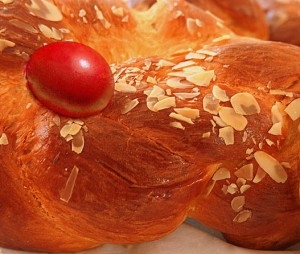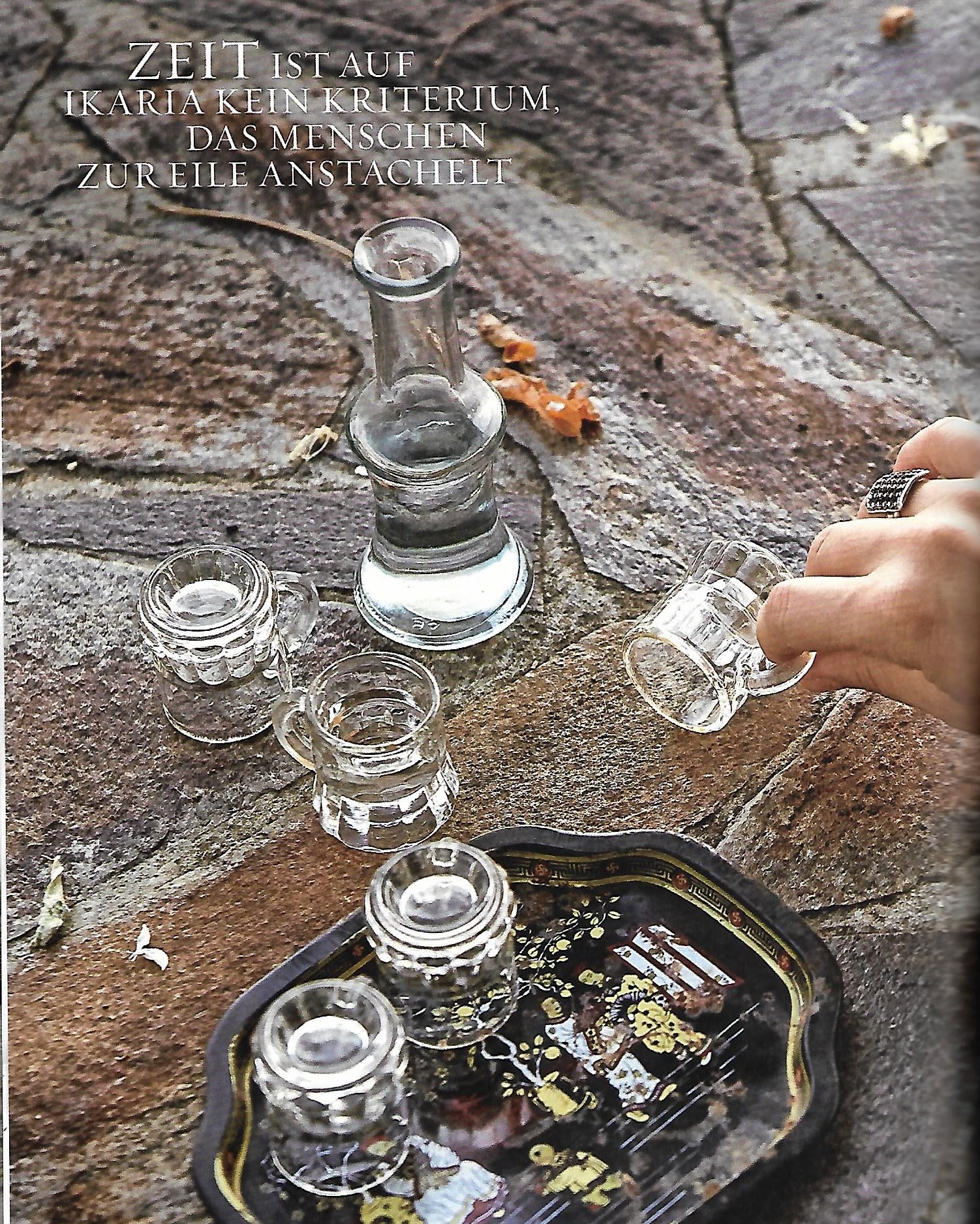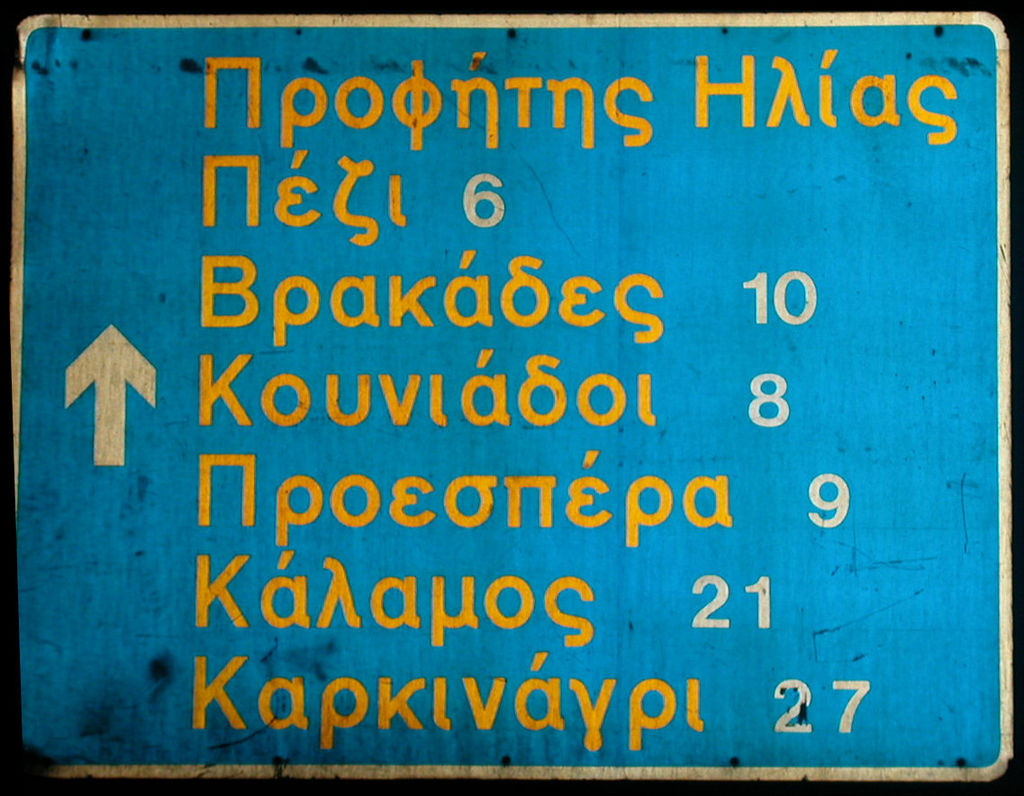In Ikaria, the tsourekia are baked in a wood-fired oven in the village bakery, giving them their very special aroma. You can smell the irresistible sweet scent of fresh pastries in every street. The two spices mastic and mahlepi make up the very special taste. These spices give the braid that certain something. You will find order addresses below, but it also works without it!
The Easter plait with the red Easter egg in the middle is traditionally a staple on every Easter table. The eggs are colored exclusively red, which symbolizes fertility, new beginnings and liveliness. They will cuddle together as a sign of Christ’s resurrection on Saturday evening at midnight after the Resurrection Mass. The egg of the one that breaks apart last (symbolically breaking open the tomb of Christ) is the absolute lucky charm!
Greek Easter braid (Pashalino Tsoureki)
Ingredients for the yeast
• 1.5 cubes of yeast
• 2 tbsp (40g) sugar
• 1/3 cup (80 gr.) lukewarm water
Ingredients for the dough
• 1 kg flour (Tsoureki flour is best, from the Greek but white flour works just as well)
• 1 tsp Masticha (mastic) – rub into powder (available from Greeks or Turks)
• 2 level tablespoons of grated Machlepi (I have given you a link to Amazon at the bottom of the page where you can easily order both Mahlep and Mastic)
• 250 gr. butter
• 1.5 cups sugar (280 grams)
• 3 large eggs
• 1.5 cups (350 gr.) fresh whole milk
• Some melted butter
• A little beaten egg for brushing
• Almond flakes
Important: all ingredients should be at room temperature!
Preparation
1. Crumble the yeast in a bowl. Add sugar and the lukewarm water. Mix well, cover and let stand for 5-10 minutes until a fine foam forms on the surface.
2. Briefly dissolve the butter and sugar in a saucepan over a low heat and stir well with a whisk. Then remove from heat.
3. Beat the eggs with the milk in a bowl and add to the butter-sugar mixture while stirring. (The mixture must not be warmer than 35 degrees).
4. Now put the flour in a large bowl and add the yeast mixture, the masticha and the mahlab.
5. Stir in the liquid ingredients.
6. Stir with the dough mixer for about 10 minutes until all the ingredients are combined. The dough rises slightly and threads form. The dough should be soft and airy, but should no longer stick to your hands.
7. Rub your hands with melted butter and remove the dough from the bowl. Place in a larger bowl and cover well with cloth towels.
8. Let stand for 2 hours. The dough will now rise three times. When you press with your finger and the dough no longer gives, it’s ready.
9. Now place the dough on the work surface and divide it into 2 or more parts (depending on how many and how big tsoureki you want to make).
10. Now about braiding: There are different techniques (including good instructions on YouTube). For example, form 2 large cords and cross them over each other. Now cross one end over the other, alternating from left to right until a braid is created. Then glue the end invisibly at the back.
11. Place on a baking tray lined with baking paper. Cover with cloth and leave to rest in a warm place in the room for another hour.
12. Mix 1 egg with 1 tablespoon of sugar and 1 tablespoon of water and brush the tsoureki well with it.
13. Let rest for another 10 minutes.
14. Sprinkle with flaked almonds or sugar if desired.
15. Bake in a well-preheated oven at 180 degrees (top and bottom heat) or 160 degrees fan for about 45 minutes.
16. After the tsoureki have cooled thoroughly, it is best to wrap them in cling film so that they stay nice and soft.
Kali Orexi kai Kalo Pasha!
Have fun baking! I look forward to your feedback!
Tsoureki recipe found at greechenland.net
Haven’t found the right hotel yet?
Choose from the Top 10 accommodations via Booking.com
More News
Ikaria in GEO-SAISON
Ikaria in the first GEO season discovery booklet Ikaria was selected for the first Geo Season discovery booklet and the most exciting destinations for 2017! A trip to the island of free spirits... [...]
Language holiday in Ikaria
A review and photos from Kirsten This September I started learning Greek on Ikaria. Picked up by car in Evdilos by Mihalis, the head of the Ikaria language center, the route continues through mountain [...]
Learning Greek made easy
Learned Greek easily - Fit for your vacation. Do you know the feeling when everyone speaks to you slowly and conspicuously loudly, like to a small child, just because you don't know [...]







